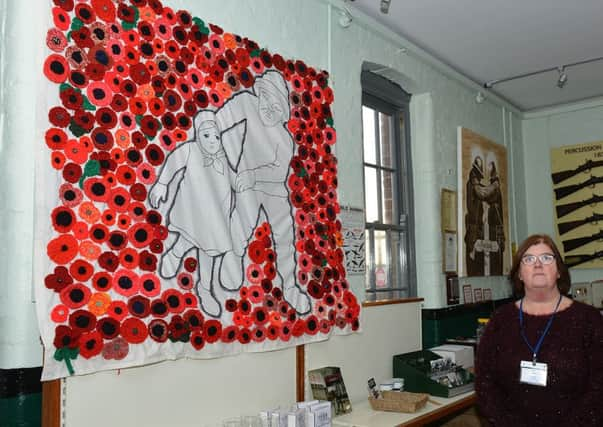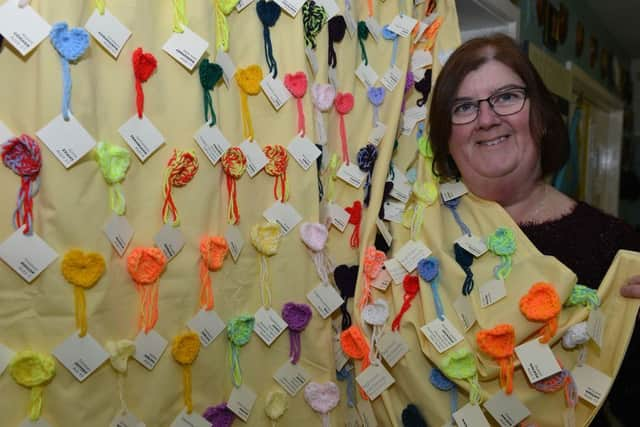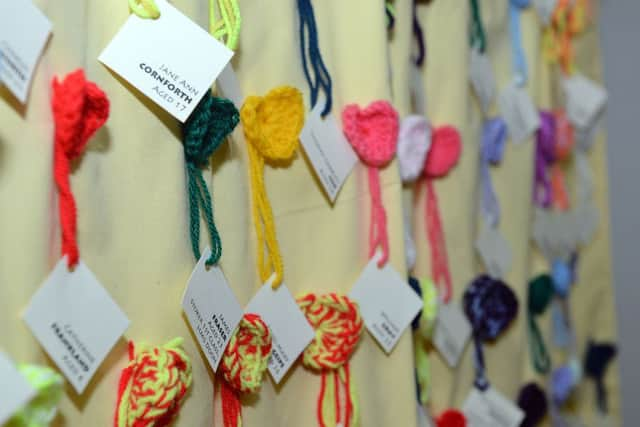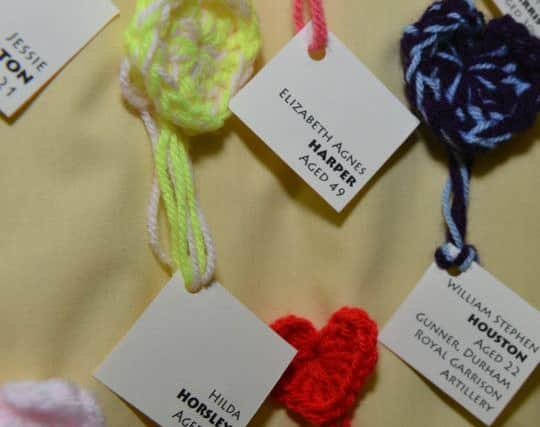Urban knitters pay tribute to victims of Bombardment of Hartlepools attack by German Navy


Secret yarners on the town’s Headland have been working overtime to finish their crotcheted creations in time for the Bombardment commemoration service.
December 16 is the 102nd anniversary of the German Navy attack on the Hartlepools, as they were then known, in which around 130 people were killed and another 500 were wounded.


Advertisement
Hide AdAdvertisement
Hide AdThe exact figure is debated because some casaulties died years later from injuries associated with the attack.
The mystery yarners have already created two military tributes made largely of poppies over the last year.
Now they have used collections of 2016 poppies to help them make two new 6ft-high creations specifically linked to the Bombardment.
One reproduces part of artist James Clark’s famous painting of the attack in which a child and adult are fleeing the attack.


Advertisement
Hide AdAdvertisement
Hide AdThe other includes the names of all known victims of the First World War onslaught.
Both are on display at the Heugh Battery Museum, in Moor Terrace, on the Headland, which was one of the areas targeted by three enemy battle cruisers.
Diane Stephens, manager of the Heugh Battery Museum, said: “What a surprise when we found out that the fairies had visited us again.
“Their work is wonderful and they must have put hours of work in to complete it all so quickly.”


Advertisement
Hide AdAdvertisement
Hide AdAmong the areas to be hit in 1914 were Moor Terrace, Victoria Place and Cliff Terrace, on the Headland, and Grange Road and Church Street, in what was then West Hartlepool.
Private Theo Jones, 27, was the attack’s first fatality and the first soldier to die on English soil during the conflict.
The museum is open from Thursdays-Sundays from 10am-4pm with entry costing £6 for adults and £4 for concessions.
It will, however, be free to enter after Friday’s service and charges do not apply to the museum’s cafe in which the Clark tribute is displayed.


Timetable for the service.
Advertisement
Hide AdAdvertisement
Hide AdPeople are urged to assemble at the battery from 7.45am before five minutes’ silence begins at 7.55am.
A slow march led by uniformed members of the ATC Cadets youth organisation and Durham Pals living history group then takes place to the nearby Redheugh Gardens war memorial before another five minutes’ silence is observed at 8am.
The battery’s museum flag is lowered at 8.05am before museum director Ralph Keeton, who has organised the event, makes a formal address.
A gun salute follows at 8.10am to mark the exact moment the first shells are thought to have been fired.
Advertisement
Hide AdAdvertisement
Hide AdA minute’s silence and the national anthem follow before the Reverend Verity Brown, of nearby St Hilda’s Church will read a reading and prayer at 8.13am.


The town’s MP, Iain Wright, and mayor, Councillor Rob Cook, will make addresses at 8.15am and 8.25am respectively before the names of the 37 known child fatalities are read out at 8.30am.
A wreath will be laid by pupils from St Helen’s School, on the Headland, before the Rev Brown offers addresses, prayers and blessings.
The Last Post will be played at 8.50am before everyone marches back to the trust at 8.51am.
Advertisement
Hide AdAdvertisement
Hide AdAnother gun salute follows at 9am with the museum flag raised a minute later to mark the end of the service.
The length of the commemoration marks the amount of time the three German battle cruisers spent shelling the town.